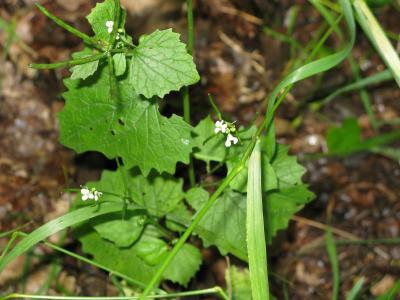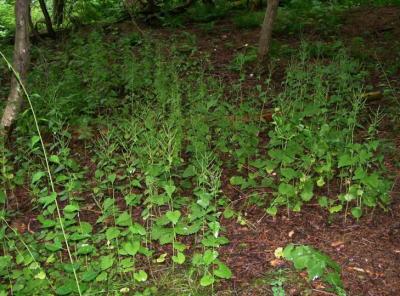States that have hunting industries have the best of both possible worlds; instead of having state union workers expensively managing wildlife, they get the public to do it - and pay for the privilege. That money is then used to pay for state biologists and conservation programs.
Scholars writing in the Proceedings of the National Academy of Sciences have realized what farmers and people in the country always knew; if you don't control the deer herd, things go out of control quickly. They only understand boom and bust so car accidents and decimated native plant biodiversity are sure to follow. Deer like trillium, for example, but an out-of-control deer population will eat it all and leave Alliaria petiolata - garlic mustard. Soon, native trillium is crowded out. Garlic mustard is native to Europe and Asia and brought to the United States in the 1860s for use as a kitchen herb, where it became an ecological menace.
As environmental activism became more urban and corporate, advocates have lost touch with nature and began to believe biologists, hunters and outdoor enthusiasts were the enemies. Yet deer density is up to 10X what it was prior to European settlement of North America. Responsible management has caused populations to manageably increase. But it requires vigilance. Each year, states like Pennsylvania optimize the numbers to cull the deer population while keeping it healthy. Otherwise, traffic accidents and starvation will be rampant.
Garlic mustard has the dubious distinction of being one of very few non-native plants to successfully invade forest understories. The persistence of garlic mustard greatly reduces forest biodiversity.

Garlic mustard in its native habitat in Hungary. If deer population gets out of control, it will be everywhere in American forests, because deer don't eat it. Credit: Carol Horvitz/University of Miami
"Our findings show that there is a link between disruption of the native animal community and invasion by non-native plant species," says co-author Carol Horvitz, professor of ecology in the University of Miami. "Similar links maybe found in other ecosystems between disrupted fauna and declining diversity of flora. Our findings imply that management of overabundant grazing animals would be beneficial for conservation of plant biodiversity."
The study was initiated in 2003 at the Trillium Trail Nature Reserve in Fox Chapel, Pa., outside Pittsburgh, by a team of researchers from the University of Miami and University of Pittsburgh. The project takes a long view on why invasive garlic mustard plants thrive to the detriment of native species.
To study the effect of rampant deer on trillium and garlic mustard populations, the researchers established multiple 196-square-meter plots in the forest. Half were fenced to exclude deer. Years of observation and hours of statistical analysis later, the team found that in plots where deer were excluded, the trillium population is increasing, and the garlic mustard population is trending toward zero.
"This demonstrates that the high population growth rate of the invader is caused by the high abundance of deer," says Susan Kalisz, professor of evolutionary ecology in the University of Pittsburgh's Department of Biological Sciences and principal investigator of the study. This effect is reversible with deer exclusion. The team's results support "an ecological theory that native species in communities can exert biotic resistance."
This means that native plants as a group can successfully compete against invaders. If the native plants are allowed to thrive rather than being consumed by deer, the combined natural competitive advantages of those plants—including trillium—allow them to repel the outsiders.

Garlic mustard invading the forest in Pennsylvania. Credit: Susan Kalisz/University of Pittsburgh
"When people walk in the woods where deer are overabundant, they don't realize what's missing," Kalisz says. "They don't know what used to be growing there. They don't know that species are being lost and replaced by invaders."
The solution seems simple, then: Reduce deer populations, restore natives and prevent invasion. "It's not simple," Kalisz says. "Deer management policies vary from state to state and deer don't respect political boundaries." Some states keep deer populations low, while others prefer to maintain higher populations to appeal to groups such as hunters. "Yet, deer exact a toll not only on forest species, but also farms, orchards, and even your car and your car insurance rate," Kalisz says.






Comments